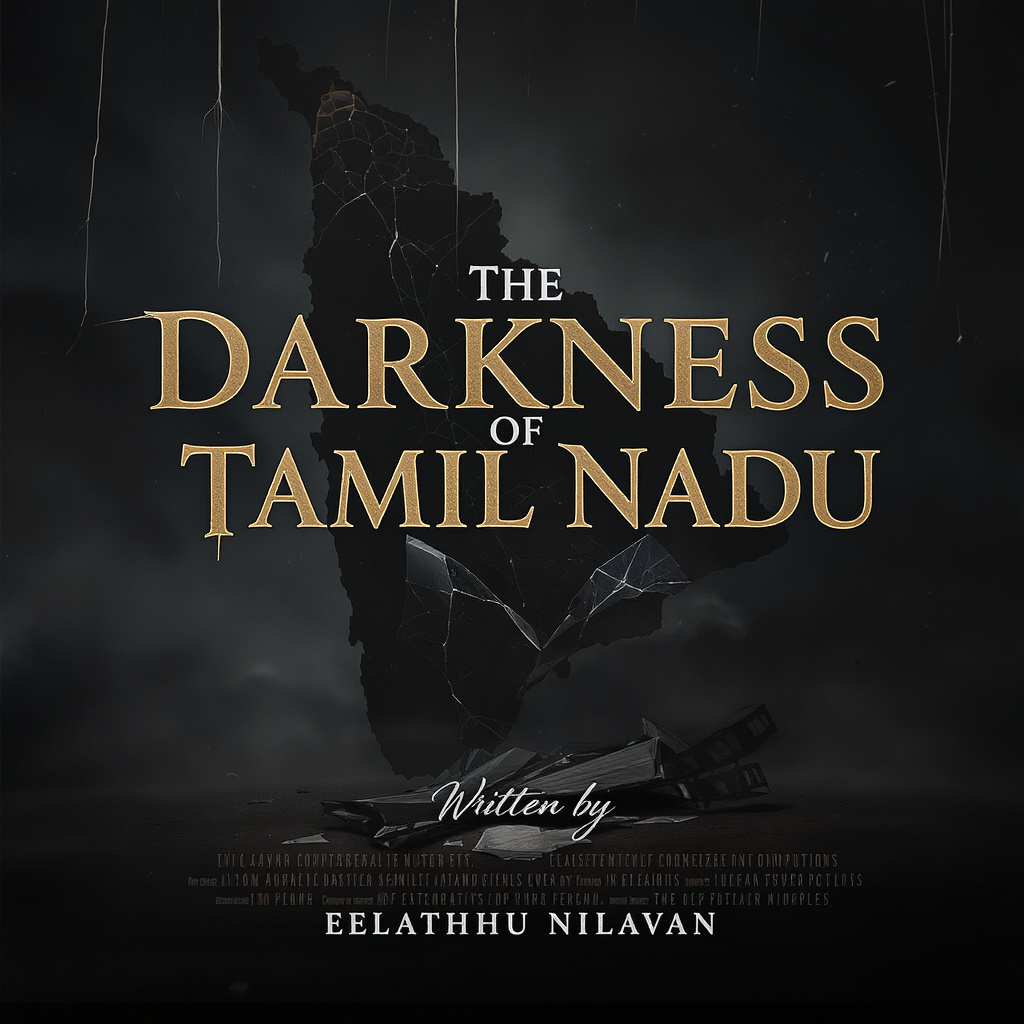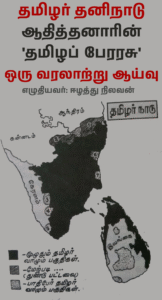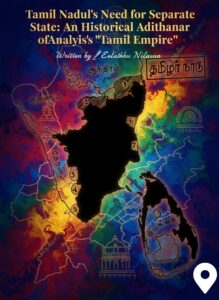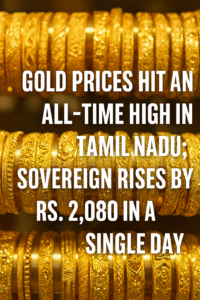The tragic Karur crowd crush on September 27, 2025, during a political rally led by actor-turned-politician Vijay, which claimed 41 lives, has sent a shockwave through Tamil Nadu’s political landscape. This sorrowful incident simultaneously exposed the pinnacle of frenzied worship for a film hero and the deep-seated corruption empire of the Dravidian parties. These two elements are deeply interwoven, representing the historical distortion that defines contemporary Tamil Nadu.

✦. Institutionalised Corruption: The Dravidian Parties’ Covert Revenue Model
The underlying truth that both the DMK and the AIADMK are corruption parties, and their respective regimes are regimes of corruption, is evident in the ongoing satirical war of words between their leaders.
A. The Evolution of Bribery: Corruption as a Covert Tax
Corruption in Tamil Nadu is not merely a matter of individual bribes; it has evolved into a systemic, institutionalised practice, operating like a covert tax on public funds.
• From Sarkaria to the 40% Formula: While the early DMK regime under Karunanidhi faced investigations by the Sarkaria Commission for direct bribery, the AIADMK regime under Jayalalithaa formalised corruption into a covert tax-like state revenue. This was most notably seen in government contract works, where up to 40% of the total contract value was mandated as a kickback.
• The Chain of Command: This massive kickback was proportionally distributed across the ruling party hierarchy—from the Chief Minister, Ministers, District Secretaries, to the local unit Secretaries. To mask the inevitable compromise in the quality of work resulting from this 40% ‘deduction,’ the minimum estimated value of the contract was artificially inflated. Subsequently, the DMK followed the same playbook.
• The Culture of Petty Corruption: Beyond mega-scams, the system is maintained by pervasive petty corruption: the alleged ₹10 collection per liquor bottle at state-run TASMAC stores (as highlighted by Vijay against former Minister Senthil Balaji) and the ₹40 taken per 40 kg paddy sack at procurement centres. This continuous cycle proves that both Dravidian parties are deeply compromised by corruption.
B. The “Democratisation” of Corruption and Party Revenue Districts
The incumbent DMK regime has arguably further “democratised” corruption, distributing the illegal revenue more broadly across its network.
• The Real Reason for Party Districts: The establishment of multiple ‘Party Districts’ (North, South, City, etc.) within a single government-defined administrative district is fundamentally aimed at sharing the ‘revenue’ generated from government contracts among ruling party functionaries and resolving internal disputes over spoils. These party districts are, in essence, ‘Party Revenue Districts’.
• Public Apathy and Complicity: When private contractors, after paying their dues, destroy lakes, hills, and forests for profit, the public in most areas does not protest. This is because the contractor has effectively ‘taken care of’ functionaries from the ruling party, the opposition, and even smaller parties. This reveals a chilling reality: corruption has been democratised from the secretariat to the remotest village.
✦. Hero Worship: The Historical Distortion of Tamil Society
The political rise of film stars is not merely that “cinema people entered politics,” but that “screen heroes were transformed into political leaders”—a profound historical and cultural collapse that occurred alongside the institutionalisation of corruption.
A. The Cinematic Shift in Political Power
The entry of cinema into Tamil politics was not accidental; it was a decades-long, calculated cultural-political evolution.
• The Saviour Image: Beginning with M.G. Ramachandran, the cinematic image of the hero—the saviour of the poor, the dispenser of justice, the rebel against monopolistic forces—was superimposed onto the real-life political figure. Consequently, the public began seeking solutions not from their real, policy-driven political leaders but from their cinematic heroes—an act of psychological displacement.
• The Stagnation of Intellectual Politics: The advent of celebrity politics marginalised genuine political discourse. Debates on policy, economic planning, sustainable development, and academic political dialogue were eclipsed by cinematic glamour and emotional rhetoric. The charisma of the screen snatched the space meant for real political intellectuals and social activists.
B. The Cultural Decay (Culture-Shift)
Cinema has not just produced leaders; it has fundamentally degraded the entire Tamil social structure and cultural values.
• The Frenzy and Violence: While fan clubs initially performed some social work, they devolved into centres of fanatical obsession. The normalisation of dying for an actor, performing milk abhishekams (ritual bathing) for cut-outs, and clashing with rival fan groups entrenched a dangerous cultural illusion of ‘valour’ and ‘loyalty.’ The Karur tragedy is the ultimate manifestation of this fanatical craze, where emotional fervour violently collided with reality.
• The Dominance of Consumerism: Cinema, through its advertisements and the display of actors’ lavish lifestyles, deeply embedded a consumerist culture. The energy and money of the youth were diverted from genuine social service and education into wasteful expenditures like erecting massive cut-outs and funding extravagant displays.
✦. The Psychological Tactic: Normalising Corruption Through Entitlement
Leaders like Jayalalithaa and Karunanidhi functioned like master psychological professors. They understood the tactic: only by turning the populace into petty corrupt entities (even at a minor level) would they tolerate the mountainous corruption at the top.
• Corruption Disguised as Welfare: These regimes announce ‘welfare schemes’ that are, in effect, corruption schemes for the populace. They are willing to provide ₹1000 per month to women for votes but are unwilling to devise pioneering new employment schemes for qualified youth.
• The Denial of Jobs to Tamils: The state’s refusal to fill nearly 50 lakh permanent positions in government offices, educational institutions, and utilities, opting instead for contract and temporary staff at meagre wages, raises a critical question: is there an underlying objective within Dravidian politics to keep the Tamil populace unemployed and fragmented? The simultaneous practice of filling jobs with people from Hindi and other states, providing them with housing and voter/family ID cards, suggests a deliberate ideological strategy aimed at ensuring Tamil Nadu ceases to remain a purely Tamil homeland.
The underlying political strategy is clear: if Tamils are accustomed to taking bribes and selling their votes, they will perceive the massive corruption by the ruling class as natural and acceptable.
✦. Conclusion: A Call for Remolding
The political emergence of actor Vijay, set against the backdrop of the corruption he critiques, underscores the urgent need for a fundamental shift in Tamil Nadu. The historical distortion that replaced statesmen with screen heroes, and the institutionalised corruption of the Dravidian parties, must be broken.
To the People! We must not allow those who claim to govern for us to become ruling plunderers. The first step is to refuse to allow any party to turn us, the citizens, into petty, corrupt individuals!
To the Youth! We must look beyond cinematic glamour and freebie politics. We must demand employment and educational opportunities instead of meagre subsidies. We must re-mould our Tamil nation by first qualifying ourselves and demanding a leadership based on merit, competence, and intellectual clarity, not on fleeting celebrity status.

Written by Eelaththu Nilavan
Tamil National Historian, Global Political, Economic, and Military Analyst
The views expressed in this article are the author’s own and do not necessarily reflect Amizhthu’s editorial stance.



